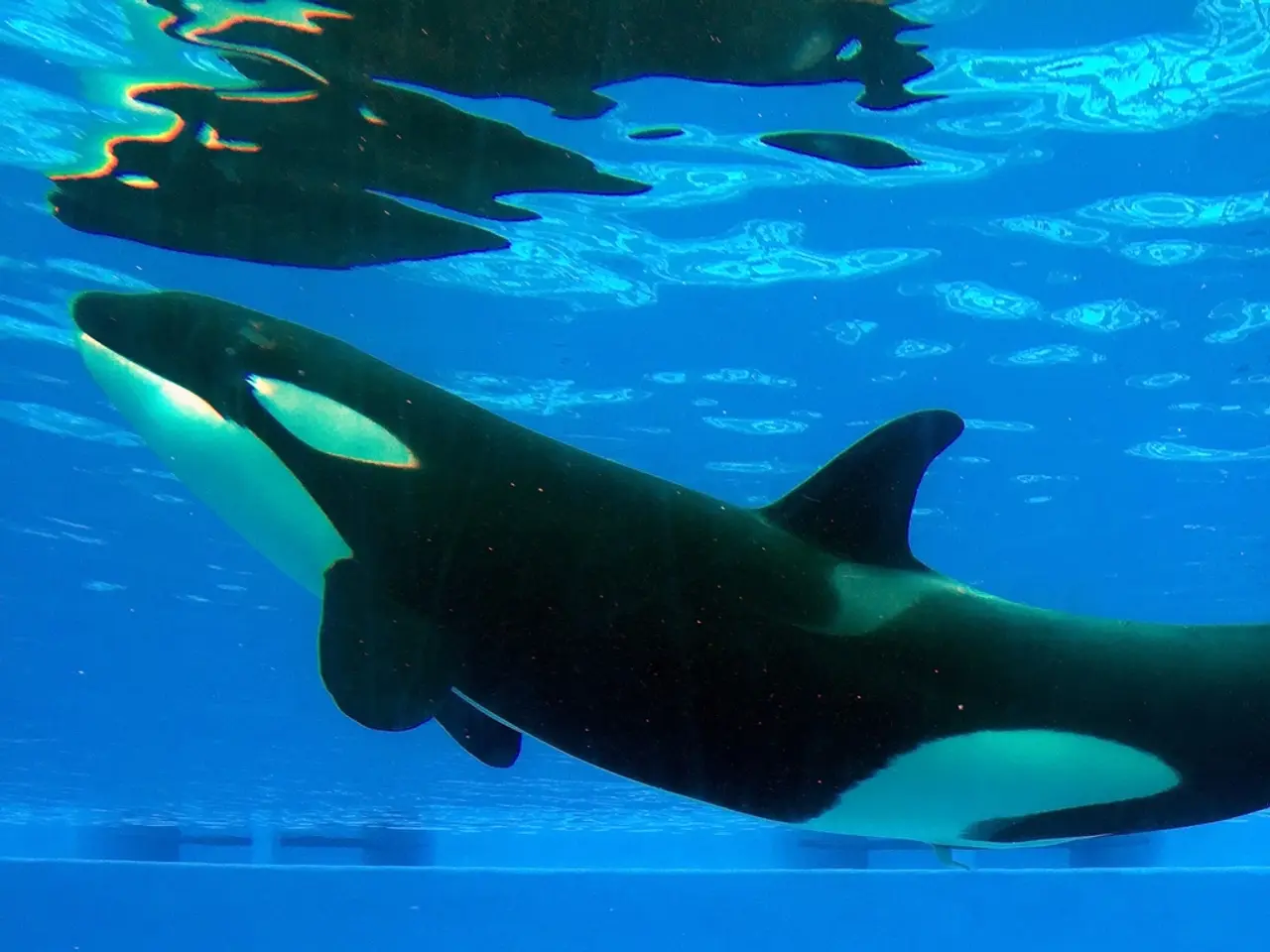Gigantic marine predator from the past boasted large eyes and fearsome teeth, yet boasted a deceptive cuteness.
In the coastal rocks of Victoria, Australia, a team of researchers has made a groundbreaking discovery that sheds light on the evolution of whales. The fossils of a newly discovered ancient whale species, named Janjucetus dullardi, were found at the base of a wave-eroded rock outcrop, part of the Jan Juc Marl formation, which is approximately 24 to 28 million years old.
Janjucetus dullardi is characterized by a compact, dolphin-sized body, large forward-facing eyes about the size of tennis balls, and a mouth full of sharp, slicing teeth. Unlike modern baleen whales, which are filter feeders and often gigantic and gentle, J. dullardi was a fast, predatory whale with a short snout and strong teeth adapted for hunting.
Distinctive features of this species include large eyes, suggesting keen vision likely useful for hunting, and sharp, slicing teeth specialized for a carnivorous diet, unlike the baleen plates of modern filter-feeding whales. The fossils also preserve detailed teeth and inner ear structures, providing insight into feeding behavior and movement.
Janjucetus dullardi belongs to the mammalodontid family, an early group of baleen whale relatives that lived during the Oligocene epoch (roughly 30–23 million years ago) but retained teeth instead of baleen. This discovery represents a key transitional form linking early, carnivorous whales with the later evolution of modern baleen whales.
The individual J. dullardi belonged to was a juvenile or subadult, around 7 feet (2.1 meters) long. The discovery of J. dullardi has unlocked an entire chapter of whale evolution that has never been seen before, demonstrating that early baleen whale ancestors were still predators with teeth before evolving filter-feeding adaptations.
Southeastern Australia has become a hotspot for ancient whale fossils, with two other mammalodontid species recovered from the Jan Juc Marl formation. The region, once a cradle for some of the most unusual whales in history, is only just beginning to have its stories uncovered.
The fossils of J. dullardi were first spotted by a school principal named Ross Dullard in 2019. After the discovery, the fossils were donated to Museums Victoria for further analysis. Researchers identified this new species from pieces of skull found on the coast of southeastern Australia. The fossils of J. dullardi were analyzed using photography, microCT scans, and other techniques.
The team named the species Janjucetus dullardi in honor of the discoverer, Ross Dullard. The analysis revealed that J. dullardi was a previously unknown species of mammalodontid. This find enhances our understanding of whale evolution, showing a stage where baleen whales had yet to develop baleen and were still active hunters, marking an important evolutionary step from toothed ancestors to filter-feeding giants.
Researchers continue to find fossils in this region and expect more discoveries in the years ahead. The ancient ancestors of today's whales first returned to the ocean some 50 million years ago, and the discovery of Janjucetus dullardi provides a fascinating glimpse into this early stage of whale evolution.
The discovery of Janjucetus dollardi in Australia, a previously unknown species of mammalodontid, highlights the importance of environmental science in understanding the evolution of whales. This ancient whale, characterized by large eyes, sharp teeth, and a carnivorous diet, bridged the gap between early toothed whales and the later filter-feeding giants, offering insights into technology related to fossil analysis techniques used in the study. As more fossils are uncovered in the region, lifestyle practices of these early whales may also come to light, shedding further light on the diversity and adaptability of these majestic creatures.




